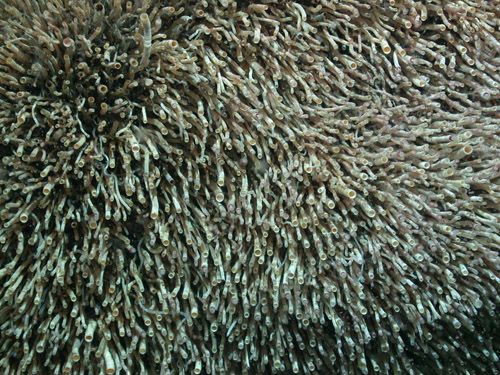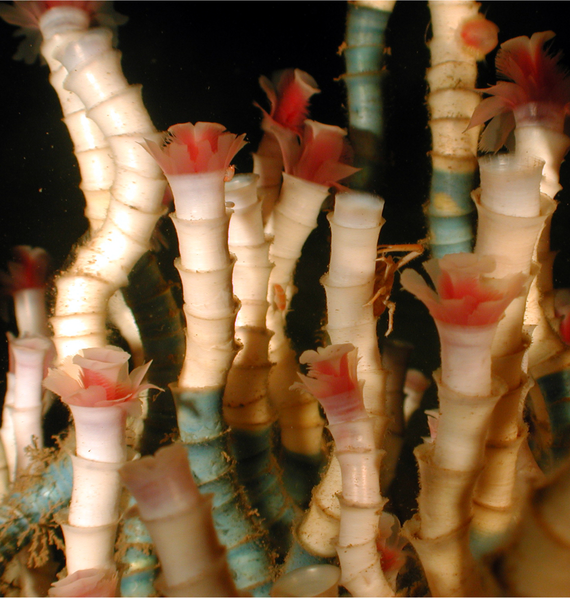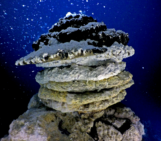Pogonophores are deep sea worms that thrive in dark, deep sea conditions thanks to the presence of symbiotic bacteria. The bacteria are chemoautotrophic, that is, they fix carbon through oxidation processes, rather than using light to fix it, as is the case for photosynthesis. By utilising oxygen in the water, the bacteria can oxidise compounds such as hydrogen sulphide in order to fix carbon. The bacteria donate surplus carbon to the worms in exchange for shelter and a steady supply of oxygen.
At hydrothermal vents, pogonophores pair up with sulphide oxidising bacteria as high-temperature seawater–rock interactions ensure that hydrogen sulphide is in abundance. Sulphide oxidising bacteria are less common at cold seeps because there is much less sulphide in the water column. Instead, pogonopheres rely on methane oxidising bacteria to supply them with carbon.
At cold seeps, the supply of methane can last hundreds to millions of years, so can sustain pogonophores throughout their lifetime. This makes these cold seep worms one of the oldest animals in the world – a 2 metre-long pogonophore may have lived for over 200 years! In contrast, the transient nature of hydrothermal vents limits the lifetime of pogonophores to several decades.
These particular pogonophores were found close to submarine mud volcanoes off the coast of Turkey:

“Pogonophores in the Mediterranean Sea” by MARUM, distributed by the EGU under a Creative Commons licence.
Pogonophores live inside chitinous tubes that provide them and their symbiotic bacteria with support and protection. In the image above, it’s hard to tell if the tubes are empty, or the worms are taking shelter within them. This is what they look like when they emerge:

Pogonophores (Lamellibrachia luymesi) emerging from their tubes. (Credit: Charles Fisher).
References:
Boetius A. Microfauna–Macrofauna Interaction in the Seafloor: Lessons from the Tubeworm. PLoS Biology 3 (2005)
Southward, E. C., Schulze, A. and Gardiner, L. Pogonophora (Annelida): form and function 535-536, 227-251 (2005)
Imaggeo is the EGU’s open access geosciences image repository. A new and improved Imaggeo site will be launching soon, so you will be able to peruse an even better database of visually stunning geoscience images. Photos uploaded to Imaggeo can be used by scientists, the press and the public provided the original author is credited. Photographers also retain full rights of use, as Imaggeo images are licensed and distributed by the EGU under a Creative Commons licence. You can submit your photos here.

